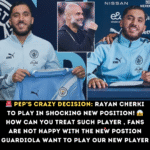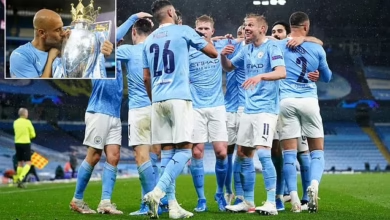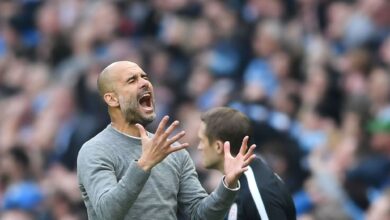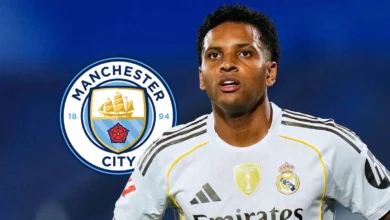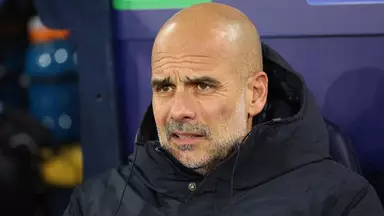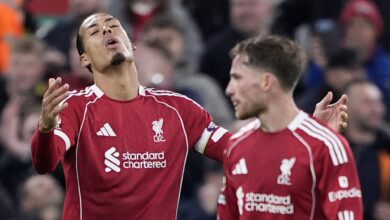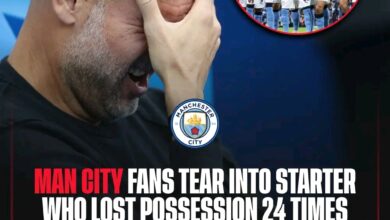Man City Close to £21M Deal – Reijnders’ Close Friend Could Be the Next Big Signing!”
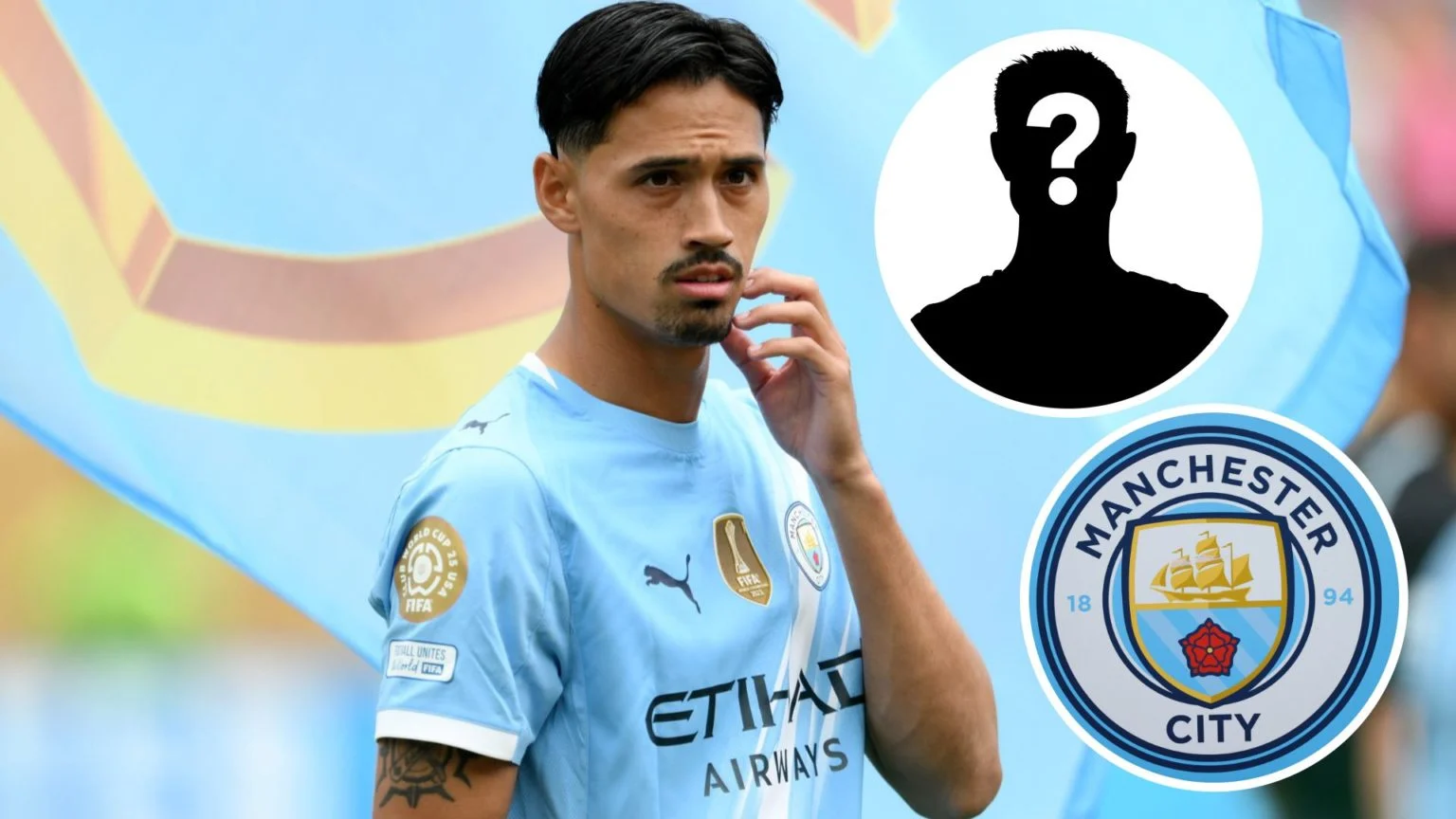
As the 2025/2026 Premier League season approaches, Manchester City finds itself at a crucial juncture in their transfer strategy. With the current campaign still months away, Pep Guardiola’s side has been actively reshaping their squad through a combination of strategic acquisitions and tactical departures. The Citizens have already welcomed four new faces to the Etihad Stadium, including the highly-rated Rayan Cherki, Dutch midfielder Tijjani Reijnders, and promising left-back Rayan Ait-Nouri, signaling their intent to remain competitive at the highest level.
However, the summer window is far from over, and City’s hierarchy continues to evaluate whether their current squad requires additional reinforcements. The club’s approach mirrors their successful strategy from the summer of 2020, when they made just three signings – Ruben Dias, Nathan Ake, and Ferran Torres – yet still managed to dethrone Liverpool and reclaim the Premier League title. This selective approach to recruitment has become a hallmark of City’s transfer philosophy under Guardiola’s guidance.
The landscape of English football has evolved significantly since then, with Liverpool under new management and armed with their own statement signings. Arne Slot’s Liverpool has bolstered their ranks with the acquisitions of Florian Wirtz, Milos Kerkez, and Jeremie Frimpong, creating a formidable challenge for City’s title aspirations. This increased competition has undoubtedly influenced City’s transfer strategy, as they seek to maintain their competitive edge in an increasingly challenging domestic environment.
The Right-Back Conundrum: Life After Kyle Walker
One of the most pressing concerns facing Manchester City this summer has been the departure of Kyle Walker to Burnley. The English defender’s exit has left a significant void in City’s defensive structure, as Walker had established himself as arguably the best right-back in the club’s modern history, alongside the legendary Pablo Zabaleta. His pace, defensive solidity, and ability to contribute in attacking phases made him an integral part of Guardiola’s tactical system.
The search for Walker’s replacement has proven to be a complex endeavor, with several high-profile targets emerging in the transfer market. Newcastle United’s Tino Livramento has been identified as a potential solution, but his astronomical valuation of £80 million would make him the third most expensive signing in City’s history. This hefty price tag has forced the club to explore alternative options that might offer better value for money while still meeting their tactical requirements.
The right-back position in Guardiola’s system demands a unique skill set that combines defensive reliability with attacking prowess. The successful candidate must be comfortable inverting into midfield when City are in possession, while also possessing the pace and physicality to handle the Premier League’s most dangerous wingers. This specific set of requirements has narrowed down the pool of viable candidates significantly.
Denzel Dumfries: The Dutch Connection
Enter Denzel Dumfries, the Inter Milan defender who has emerged as a prime target for Manchester City’s right-back position. According to reports from Football Transfers, City have initiated discussions with the Italian giants regarding a potential move for the Dutch international. The 29-year-old possesses a relatively modest release clause of £21.5 million, representing excellent value in today’s inflated transfer market.
Dumfries’ profile aligns perfectly with City’s requirements for the position. The former PSV Eindhoven player brings a wealth of experience from both domestic and international football, having established himself as a key figure in the Netherlands national team setup. His physical attributes, combined with his attacking instincts and defensive awareness, make him an ideal candidate for Guardiola’s tactical system.
The financial aspect of this potential transfer cannot be overlooked. At £21.5 million, Dumfries represents a fraction of the cost that would be required to secure Livramento’s services. This price point allows City to maintain their financial flexibility while still acquiring a player of proven quality and experience. The modest fee also reduces the financial risk associated with the transfer, particularly important given the club’s recent experiences with high-profile signings.
Barcelona have also expressed interest in Dumfries, but their well-documented financial difficulties provide City with a significant advantage in negotiations. The Spanish giants’ inability to compete financially with City’s offer could prove decisive in securing the Dutch defender’s signature. This situation highlights the ongoing financial disparity between Europe’s elite clubs and how it continues to influence transfer outcomes.
The Reijnders Connection: International Chemistry
One of the most intriguing aspects of City’s pursuit of Dumfries is the existing relationship between the defender and current City midfielder Tijjani Reijnders. The two Dutch internationals have developed a strong understanding through their time together with the Netherlands national team, a factor that could prove crucial in Dumfries’ potential adaptation to life at the Etihad Stadium.
Statistical analysis reveals the strength of their partnership at international level. In 19 appearances together for the Netherlands, Reijnders and Dumfries have been part of a team that has won 12 matches, drawn three, and lost just four. This impressive record of success suggests a natural chemistry between the two players that could translate seamlessly to club football.
The presence of Nathan Ake, another Dutch international, further strengthens the appeal of Manchester City for Dumfries. The defender would join a well-established Dutch contingent at the club, potentially easing his transition to English football. This cultural and linguistic familiarity often proves invaluable for new signings, particularly those moving to a new league and country.
The tactical understanding between Reijnders and Dumfries could prove particularly beneficial given Guardiola’s emphasis on positional play and intricate passing combinations. Their existing chemistry could allow for more complex tactical instructions to be implemented more quickly, potentially accelerating Dumfries’ integration into City’s playing system.
Tactical Fit and Strategic Implications
From a tactical perspective, Dumfries’ playing style appears well-suited to Guardiola’s demands. The Dutch defender’s ability to contribute in both defensive and attacking phases aligns with the modern full-back role that has become increasingly important in elite football. His experience in Serie A, one of Europe’s most tactically sophisticated leagues, suggests he possesses the tactical awareness necessary to thrive in Guardiola’s system.
Inter Milan’s tactical approach under various managers has often required their full-backs to play multiple roles within a single match. This versatility would be particularly valuable at Manchester City, where full-backs are expected to invert into midfield, overlap in wide areas, and contribute to both build-up play and defensive solidity. Dumfries’ adaptability in this regard makes him an attractive proposition for City’s tactical setup.
The potential signing also addresses City’s need for squad depth in the right-back position. With Walker’s departure, the club has been left with limited options in this area, making additional recruitment essential. Dumfries’ arrival would provide Guardiola with tactical flexibility and the ability to rotate players without compromising the team’s overall balance.
The Nico Gonzalez Dilemma: Patience or Profit?
While City pursues new additions, they also face decisions regarding existing squad members. Nico Gonzalez, the Spanish midfielder who joined the club in January 2025 for £50 million, has emerged as a potential departure candidate. Despite his relatively recent arrival, reports suggest that both the club and the player are open to a summer exit.
This situation presents a fascinating case study in modern football economics and squad management. Gonzalez’s limited playing time since his arrival – just 13 starts across all competitions – has raised questions about his long-term future at the club. His performances have been inconsistent, with impressive displays against Fulham, Newcastle United, and Brighton offset by more subdued showings against elite opposition such as Real Madrid and Tottenham Hotspur.
The decision to potentially sell Gonzalez so soon after his arrival would represent a significant departure from City’s usual approach to player development. Traditionally, the club has shown patience with new signings, allowing them time to adapt to Guardiola’s complex tactical system. The Spanish midfielder’s situation raises questions about whether this patience is waning in the face of increased competition and financial pressures.
From a tactical standpoint, Gonzalez has demonstrated several positive attributes that suggest he could develop into a valuable squad member. His technical ability, vision, and work rate have been evident in his better performances, while his struggles have often been attributed to the natural adjustment period that many players experience when joining City. The question facing the club is whether they believe he can overcome these early challenges and fulfill his potential.
Financial Considerations and Market Dynamics
The financial implications of City’s summer transfer activity extend beyond individual transactions. The club’s approach to the transfer market reflects broader trends in football economics, where clubs must balance sporting ambition with financial sustainability. The potential sale of Gonzalez, despite his recent arrival, could be viewed as a pragmatic decision to recoup funds and avoid further losses on a player who may not fit the club’s long-term plans.
The contrast between the Dumfries and Livramento situations highlights the importance of value in the modern transfer market. While Livramento’s £80 million valuation reflects his potential and Premier League experience, Dumfries’ £21.5 million release clause represents a more affordable option that could deliver similar tactical benefits. This decision-making process illustrates how financial considerations increasingly influence sporting choices at the highest level.
City’s relationship with player agents also plays a crucial role in their transfer strategy. The reported strong relationship with Dumfries’ representative could facilitate a smoother negotiation process, potentially allowing the club to complete the transfer more efficiently. These behind-the-scenes relationships often prove decisive in competitive transfer situations.
Competitive Landscape and Strategic Positioning
The broader competitive landscape of the Premier League continues to evolve, with several clubs making significant investments in their squads. Liverpool’s acquisitions of Wirtz, Kerkez, and Frimpong represent a clear statement of intent from Arne Slot’s side, while other traditional rivals continue to strengthen their positions. This increased competition has undoubtedly influenced City’s transfer strategy, as they seek to maintain their competitive advantage.
The timing of City’s transfer activity also reflects the compressed nature of the modern transfer window. With the season approaching rapidly, clubs must balance the need for thorough due diligence with the urgency of completing deals before the window closes. This pressure often leads to accelerated negotiations and decision-making processes that can impact the final outcomes of transfers.
City’s historical success in the transfer market provides them with significant leverage in negotiations. Their track record of developing players and winning trophies makes them an attractive destination for potential signings, while their financial stability ensures they can compete for the most coveted targets. This combination of sporting success and financial strength positions them favorably in most transfer negotiations.
Technical Analysis and Player Profiles
A deeper analysis of Dumfries’ playing style reveals several attributes that align with City’s tactical requirements. His pace and athleticism make him well-suited to the physical demands of the Premier League, while his crossing ability and attacking instincts could provide additional offensive options for Guardiola’s side. His experience in high-pressure situations, including major international tournaments, suggests he possesses the mental fortitude necessary to succeed at the highest level.
The defender’s versatility is another asset that could prove valuable at City. His ability to play in multiple positions across the backline provides tactical flexibility, while his understanding of different tactical systems could allow for more varied approaches depending on the opposition. This adaptability is increasingly important in modern football, where teams must be prepared to adjust their tactics within individual matches.
Dumfries’ age profile also aligns with City’s strategic planning. At 29, he represents a mature player who could provide immediate impact while still offering several years of peak performance. This balance between experience and longevity is often crucial in transfer decisions, particularly for clubs with both short-term and long-term objectives.
Conclusion: Balancing Ambition and Pragmatism
Manchester City’s summer transfer activity reflects the complex balancing act that modern football clubs must perform. The pursuit of Dumfries represents a pragmatic approach to squad building, combining tactical suitability with financial responsibility. The potential departure of Gonzalez, meanwhile, highlights the unforgiving nature of elite football, where patience and profit must be carefully balanced.
The coming weeks will prove crucial in determining the final composition of City’s squad for the upcoming season. The club’s ability to complete the Dumfries transfer while managing other squad decisions will likely influence their prospects for the campaign ahead. With increased competition from rivals and the pressure to maintain their position at the summit of English football, every decision carries significant weight.
The interconnected nature of these transfer decisions – from the pursuit of new players to the management of existing squad members – demonstrates the complexity of modern football operations. Success in the transfer market requires not only identifying the right players but also managing the broader implications of each decision on squad harmony, financial sustainability, and competitive positioning.
As Manchester City continues to navigate this challenging landscape, their ability to maintain their competitive edge while adapting to changing circumstances will be crucial to their continued success. The summer of 2025 may well prove to be a defining period in the club’s recent history, with the decisions made in the coming weeks potentially shaping their fortunes for years to come.

